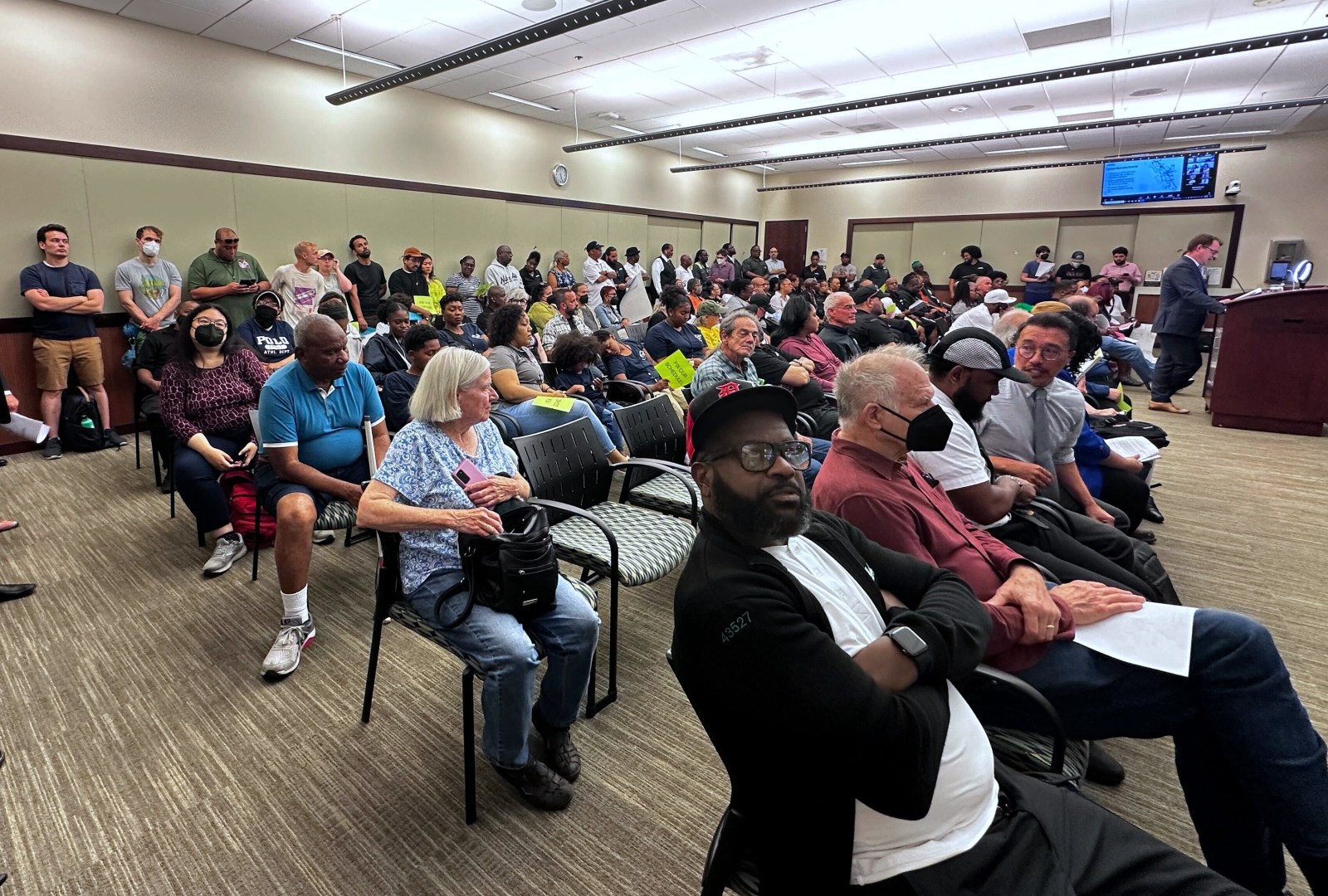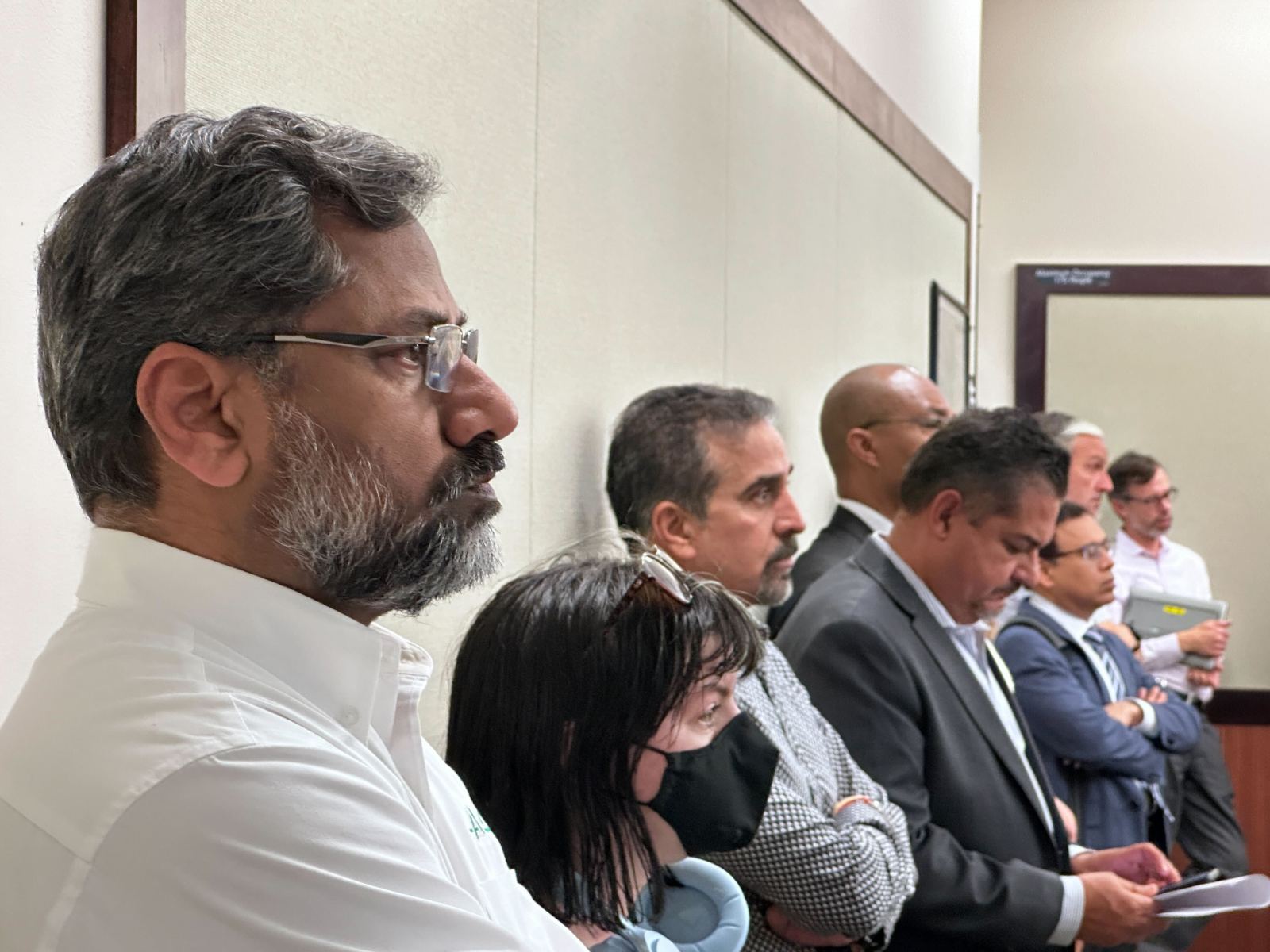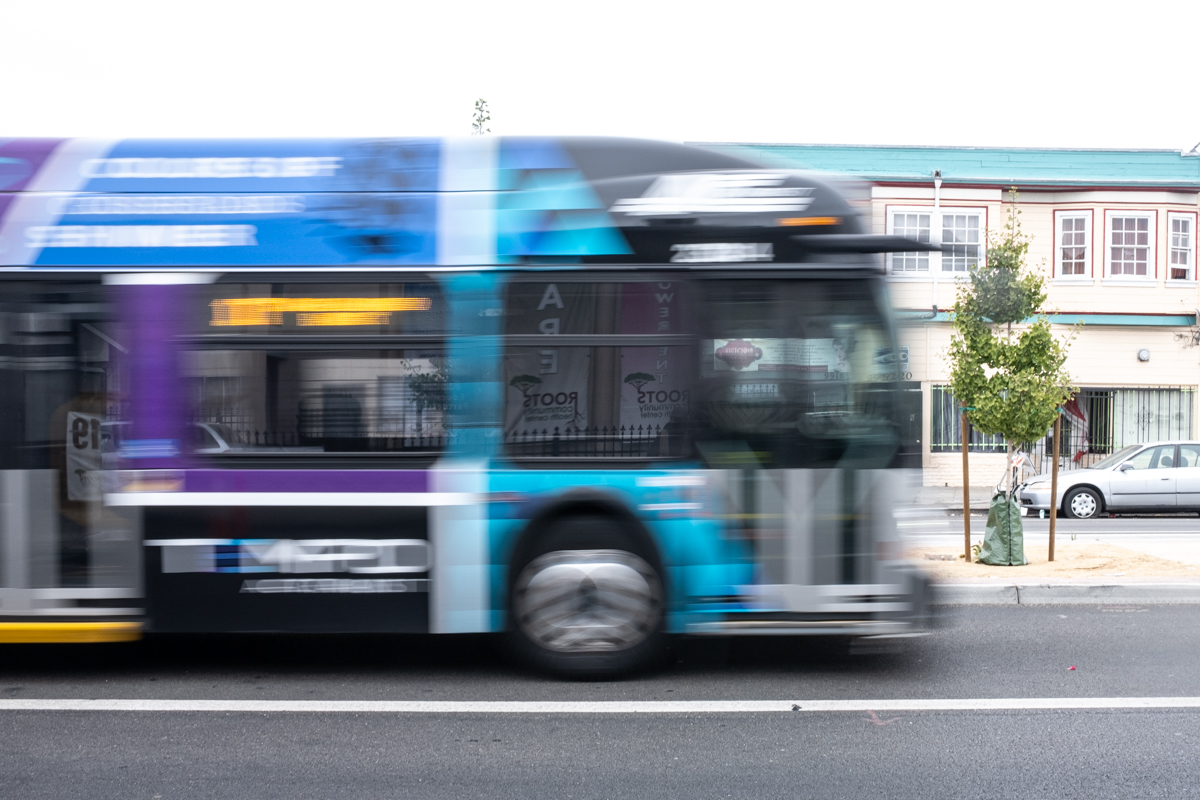This story was updated June 13 with comments from AC Transit.
AC Transit is considering the biggest update to its bus schedules in years, but the changes would be a real pain in the bladder for Adrian McFarland, a bus operator for the past decade.
“I’ve never had to worry about using the bathroom so much,” he said of the current AC Transit schedules, which drivers find frustrating because they’re stressfully tight and don’t leave much time for breaks. The new schedules proposed by the agency would go from bad to worse, say drivers.
“I sacrifice the bathroom. I sacrifice getting up out of the seat [to make times],” McFarland told the AC Transit board at its meeting last week. “All the scheduling department does is look at data. They see the run is being met, but we need time to be able to be human.”
Dozens of angry bus operators rebuked the agency’s planners at last week’s meeting for failing to speak to their union before changing route schedules. In response, AC Transit’s general manager struck an apologetic tone, saying the plans would not move forward without the drivers’ support.
Robert Lyles, a spokesperson for AC Transit, told The Oaklandside the agency has been in talks with bus operators at town halls, through surveys, and in-person meetings to get their input on travel times, driving delays, and new bus destinations.
“AC Transit Realign has been in development for almost two years, and conducting a network analysis of this scale without the prior involvement of our largest employee union, ATU Local 192, is impossible,” Lyles said. “AC Transit’s collective Planning, Scheduling, Transportation, and Labor teams have consistently collaborated with Local 192 on all Realign proposals.”
Lyles also said that this year, AC Transit has met with ATU’s new union leadership on the proposals but has not done so in recent weeks because of schedule conflicts.
The operators at last week’s meeting, many of whom held colorful signs that called on AC Transit to “Fix our Schedules,” packed the second-floor meeting at the agency’s downtown Oakland office.
The protest was organized by Local 192 of the Amalgamated Transit Union. Drivers argued that the latest draft proposal of AC Transit’s Realign project did not take their needs into consideration. They said the proposal focuses too much on frequent service to meet unreasonable schedules, giving operators less time to go to the bathroom and take breaks than the previous proposal the district offered in January.

Operator Linda Muhammad said schedules would be so tight that they would leave drivers with only about five to seven minutes to go to the bathroom, take a mental break, and eat something—all before hitting the road again and driving for hours.
“The 15-minute layover is not 15 minutes,” she said. “We get there maybe six or seven minutes after and then we have to secure the bus, answer questions, run to the bathroom, come back, load up, and we’re usually pulling out late because there’s a lot of people getting on our bus.”
Based on the current contract between the union and AC Transit, the amount of break time is based on whether the operator has a continuous or split shift. That means there is no standard of break time. This is the case because, according to Laurel Paget-Seekins, a policy advocate for transportation justice with Public Advocates, a nonprofit public interest law firm, the recovery time built into the bus schedules isn’t actually “break time for the operators.”
“That is time to make sure the bus stays on schedule. So on paper it might look like the operator gets breaks, but if the schedules aren’t accurate, they don’t get it in practice,” she said.
Paget-Seekins said at the meeting that AC Transit planners also failed to consider how unreasonably tight schedules could force drivers to make more risky decisions on the road. Planners appeared to use only the time data points at each bus stop and at the ends of lines picked up by the onboard GPS system.
“The geolocation data doesn’t tell you drivers had to go into an intersection or through a yellow or red light,” she said. “Did they leave a stop before passengers were seated? There needs to be a standard process for gathering operator data so staff can analyze it with automated data in order to truly understand what is needed in order to fix the times and reliability of the schedules.”
Some operators alleged that AC Transit’s schedule not only squeezes their break time but also lowers overall service quality.
Operator Adrian Cruz spoke about stopping and picking up passengers in the middle of the road to compensate for lost time instead of pulling over to the curb. This unfortunately places pedestrians and people with disabilities at risk of falling or being hit by cars. They also told The Oaklandside that the existing schedule forced them to skip stops, angering riders. Others said the demanding frequency targets stressed them out and increased the likelihood of colliding with other vehicles.
“AC Transit has a responsibility to provide a safe service for the passengers, but passengers are in danger. Why? Because operators are fatigued. They’re supposed to never operate unless they’ve had the required amount of rest,” Yvonne Williams, the former president of ATU 192, said.
AC Transit’s Lyles said these claims are inaccurate because they “lack any supporting data.”

Board members Sarah Syed and Jean Walsh asked the planners to create a metric to better understand the loss of time experienced by operators, including pinpointing road sections where excessive traffic causes delays.
AC Transit’s general manager, Michael Hursh, said the message from the drivers came through “loud and clear” and that he will meet with union leaders to make sure their wishes for longer runtimes and more breaks are implemented.
“You have my commitment to redouble those efforts,” Hursh said. “I absolutely think every employee should have access to bathrooms and schedules that are reasonable with the break time and we will triple our efforts to make that happen as soon as we can. This clearly is not gonna move forward without the support of ATU.”
This will be the second time this year the Realignment planners are going back to the drawing board to reconfigure schedules.
In January, AC Transit’s board postponed the approval of the schedule by six months and the new start date by March 2025. At the time, the board and AC Transit operators said members of the public had not had enough time to comment on the line changes. They also said the bus schedules, which were designed to help operators have more breaks, had gotten too long and would impact riders.
That’s why this month’s draft proposal pivoted to improving bus frequency schedules for “equity priority communities,” low-incomes and majority people of color areas where more people rely on the bus. The idea was to connect them faster to community hubs like grocery stores and medical facilities.
The plan also added more frequent lines with pick-ups every 15 minutes or better during the weekdays on several routes. It also reinstated the 72R rapid-bus line on San Pablo Avenue, which would have been cut to accommodate a more frequent 72 bus schedule. But riders and operators said it might lead to fewer people taking the bus. The other major change proposed in the most recent plan included combining Lines 51A and 51B, which currently require a transfer at the Rockridge BART station. A new single Line 51 would shift the beginning of the line from Alameda to the Lake Merritt BART station, with a new connection to Alameda through the 6 line.
The exasperating nature of these back-and-forth proposals has become evident at AC Transit board meetings.
“The schedules have gotta reflect reality, not just the [data],” Christian Peeples, the board’s director, said last week. “So good luck with that.”
AC Transit planner Michael Eshleman said his team will be working on the new plan over the summer and that a March 2025 start of the new schedule is still possible.
One reason the bus schedule has become a battleground on which the wishes of operators, riders, and management duke it out is that the agency is trying to improve service without hiring any new staff or making significant new investments. Peeples said the agency has no extra money to work with, none is expected over the next few years, and it’s still working with lower revenues because of a post-pandemic drop in ridership.

Even if a version of a statewide transit fund is approved by the legislature, he said at the meeting last week, AC Transit is unlikely to get a large new chunk of money.
“If you want more reliability, you cannot get more frequency, unless somehow you can write a couple of hundred-million-dollar checks,” Peeples said. “We were buoyed with the federal money during the pandemic and maybe in ’26 we’re gonna get regional money, but it’s a quarter of what is needed. BART is gonna get 60%, and SF Muni’s gonna get another 20% or 30%, and we’re gonna be left with the dregs.”
Speaking at the meeting, Jesse Gunn, a board candidate for AC Transit’s Ward 6 seat, urged the board to advocate for more funding from state and feds to improve service across the board.
“I understand you are trying to make these changes and improve the services in a cost-neutral setting,” Gunn said. “[But] that cost has to come from somewhere, and until now that cost has come on the backs of your workers, your strongest assets, and the ones that carried us through the pandemic on the front lines.”
Current staffing is at around 1,180 operators, according to the board. The agency is budgeted for a staff of 1,308, but management said it has a difficult time hiring and keeping staff employed, in part because of the physical nature of the job.

